Rani Re-Rolling Mills Ltd.
Steemian Friends,
Today, I will participate in Steemit Challenge 24, week 05 of the Steem Atlas map challenge. This week's challenge is Steemit Challenge Season 24 Week 05—How to Add Places, Roads, and Areas to Steem Atlas Using OpenStreetMap. I hope everyone will like my writing.
Today I will add the company I work for to the map through OpenStreetMap. I enter the OpenStreetMap app and zoom in to find the location of our company first. The name of our company is Rani Re-Rolling Mills Limited. I am currently located in Unit-02. The two units are side by side and shown on the map according to my location. Then I select Factory from the feature type. Then I write the name of our company, Rani Re-Rolling Mills Limited. Then I write the address and click on upload. Then I click on the save option in the right corner. I have shown the whole process with the screenshot below.
 |  | 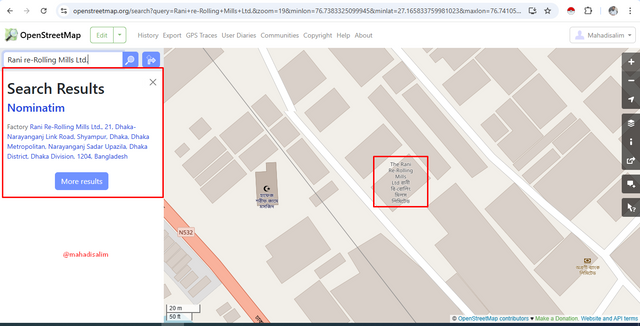 |
|---|
Then I went into the Steem-atlas map and checked our company name. One of our two units is showing up on the Steem-atlas map. I have shown it with a screenshot of the Steem-atlas map below.
I will add a school near our office through OpenStreetMap. As per the homework requirement, I am adding an educational institution. The name of the school is Bakchar Adarsh High School. I first searched for the name of the school using the search button on OpenStreetMap. I did not find the name of the school on the map. Then I saw the school and uploaded it through the edit feature. Then I clicked on the save button in the right corner. After waiting some time, the school's name was added to the map. I have shown the whole process with the screenshot below.
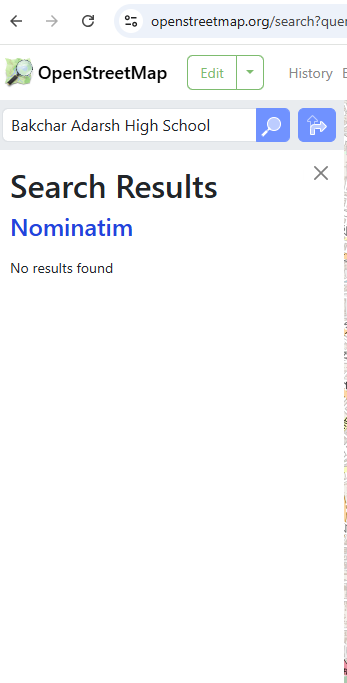 | 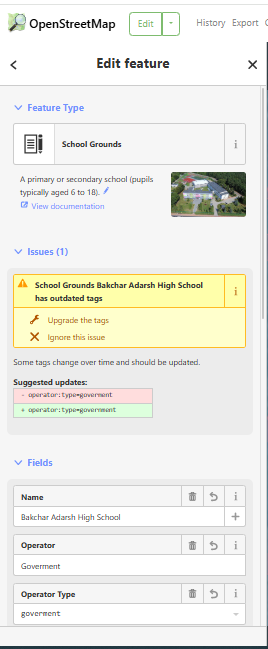 | 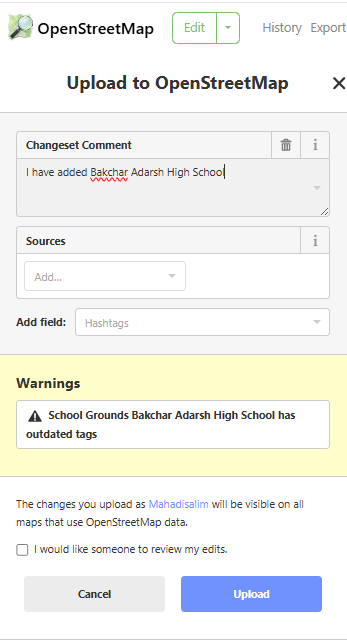 |
|---|
Then I can see the name of the school I added through the Steem-atlas map. I went to the Steem-atlas map and showed it with a screenshot.
Then I went to Shyampur Substation DPDC, a 132 kV electrical transmission line across the school grounds. I went to Edit Feature and saved the information through OpenStreetMap. I completed the work using the line tools of OpenStreetMap. While adding the above locations, I used the point and area tools. I have shown it with a screenshot below.
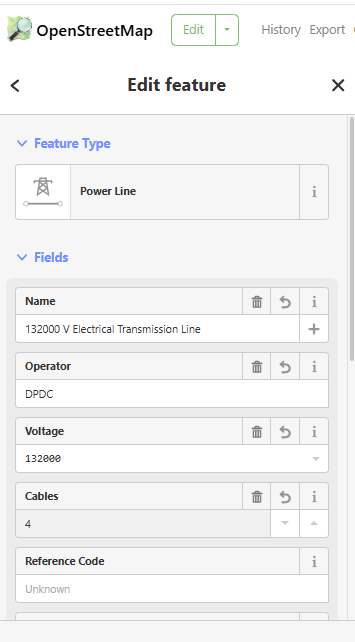 |  | 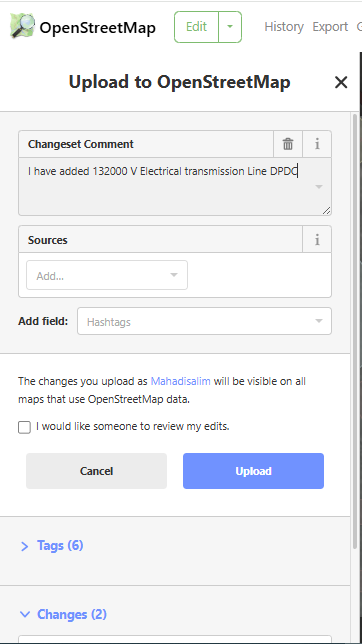 |
|---|
I added a place of my choice through OpenStreetMap. I am an electrical engineer. I work in an electrical substation. So I added a 132 kV substation in OpenStreetMap. Shyampur Substation DPDC is located next to our office. I found the substation through OpenStreetMap. Then I added the substation by searching for it from the edit feature option. Then I clicked on the upload and save option. After waiting for some time, I saw the substation on the map. I have shown it with a screenshot below.
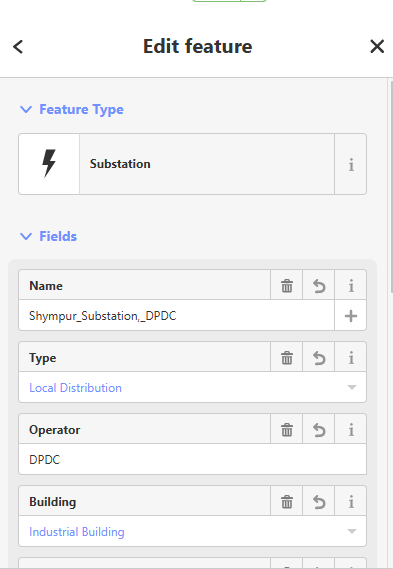 |  |  |
|---|
Then I went to the Steem-atlas map and saw the location of the substation. I have shown the Steem-atlas location with a screenshot.
First, I enter the OpenStreetMap website. Then, I see two options on the right side of the page, which are Log in and Sign up. Since I am a new user, I click the Sign up option. Below, I have shown a screenshot with a red block.
I first provided my email address to sign up. Then, I provided Mahadisalim as the display name. I initially provided Mahadi, but it was not accepted, so I changed the display name later. I then provided the password and confirmed it. Finally, I clicked on the sign-up option. Below, I have shown a screenshot with a red block.
Then I see a page called Check Your Email. Then I enter my Gmail input. I was sent an email from OpenStreetMap and given a link. I click on the link and wait for some time. Then I saw that my sign-up on OpenStreetMap was complete. I have shown it in the screenshot below with a red block.
Then, I log in to the OpenStreetMap website. I successfully logged in and saw my display name on the map. Below is the login screenshot with the red block.
I see two options following the search button on the OpenStreetMap map page.
- Edit with ID (in browser editor)
- Edit with Remote Control (JOSM, Potlatch, Merkaartor)
I will use the first option to add places to the map. The second option requires programming knowledge, so today, I will use the first option to add places to OpenStreetMap.
Then I enter the map with the first option Edit With Id and see three options.
- Point
- Line
- Area
Points: I will use points to add places like restaurants, monuments, and schools.
Line: I will use lines to identify roads, bridges, rivers, or canals.
Area: I will use area to define a place, a pond, a house, or a large area.
Today, I will review my job company, Rani Re-Rolling Mills Ltd, because I have to review one added to OpenStreetMap as per the homework rules. There are three units of Rani Re-Rolling Mills side by side. Today I will review one unit that I added to OpenStreetMap. The company is located in Shyampur Industrial Area. It is located on the side of the Dhaka-Narayanganj Highway at Dhaka Match. I have shown the Steem-atlas location pin map of Rani Re-Rolling Mills below, which is visible after I added it through OpenStreetMap.
| Steem-Atlas Location Pin | [//]:# (!steematlas 23.67499948 lat 90.44821858 long Rani Re-Rolling Mills Ltd d3scr) |
|---|---|
| Plus code | Link |
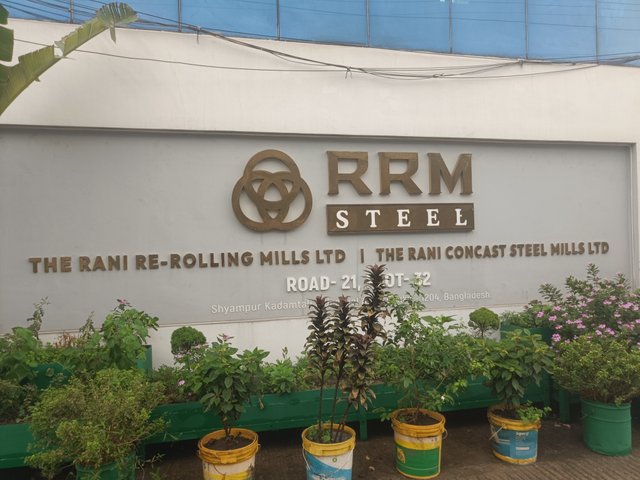
In front of Rani Re-Rolling Mills Ltd.
Rani Re-Rolling Mill produces rods. Rods are made from billets. Billets are produced in two company units, and the billets go to the third unit to produce rods. Billets are created in the unit shown in OpenStreetMap, so I will describe the billet production unit today.
.jpg)
I am standing in front of our office.
Billets come in different sizes. A billet is ten feet long and square and weighs about 238 kg. They are made by melting iron, which is refined iron. We call discarded iron scrap. The discarded iron is melted in an electric induction furnace to produce billets. A lot of electricity is required to melt iron.
.jpg) | 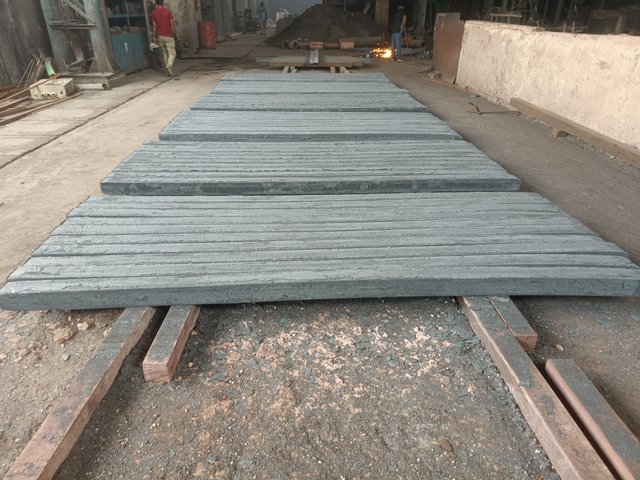 |
|---|
The billet from which the rod will be produced is prepared.
We use 8, 15, 20, and 50-ton furnaces to melt iron. Our company can melt 20 tons of iron at a time, which takes about 120 minutes. Currently, more sophisticated iron melting furnaces worldwide can melt iron in less time.
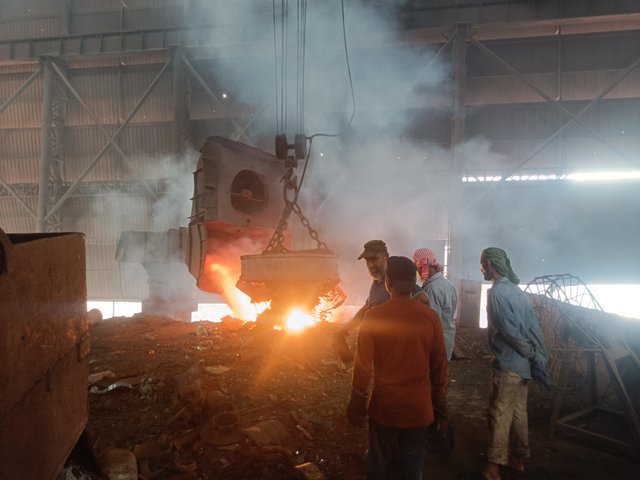 | 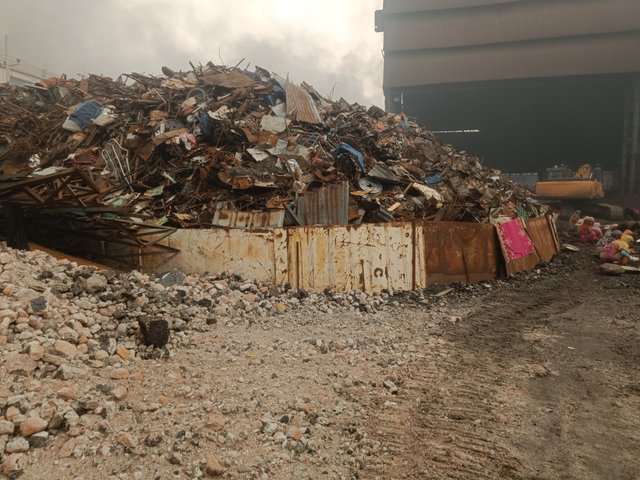 |
|---|
Iron and steel smelting units
Iron is melted and becomes red and liquid. Then the material is tested in the chemical lab room. Molten iron has a certain level of manganese and carbon. If the amount of carbon increases, the billet produced will not produce good rods. Therefore, the chemical test of molten iron is very important. We see the grade written on the rod as 40 or 60. For the grade to be correct, the billet's chemical report must be good. The chemical report of the billet is very important for a rod manufacturing company.
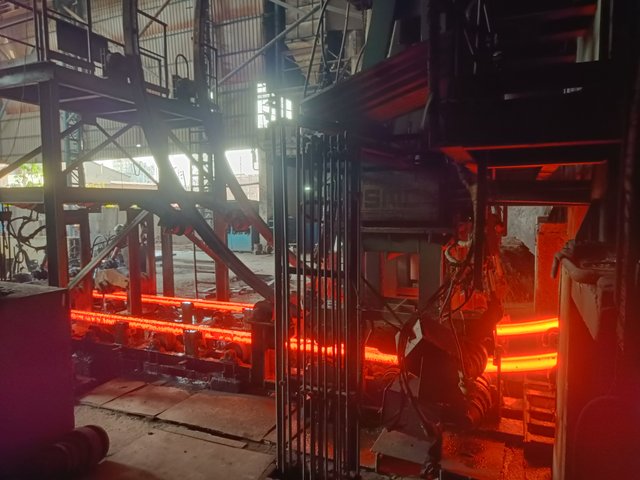 | .jpg) |
|---|
CCM(Continuous-Casting Machine) Unit
Molten iron is brought from the furnace to the CCM unit through an overhead crane. In the CCM unit, the molten iron is formed into billets of a specific size through a mould. Then the billets are cut into ten feet and kept in a cooling bed for some time to cool. Molten iron is brought from the furnace unit to the CCM at 1600 degrees Celsius. After the billets are formed, the cooling bed has a temperature of 800-1000 degrees Celsius. The produced billets are taken to the rolling unit to make rods. This way, 300+ tons of billets are produced in this unit daily.
| Business Name | Rani Re-Rolling Mills Ltd. |
|---|---|
| Location | Dhaka, Bangladesh |
| Open | Open 24 hours |
| Company Owner | Chairman: MD Sumon Chowdhury & Managing Director: MD Shuvo Chowdhury |
| Employee | About Two thousand |
| Product | Rod & Billet |
| Billet Price | 70,000 Taka(Local) per ton or 3740 Steem |
| Web Link | Link |
| Mobile | One plus nord2 5G |
| Score | 9.5/10 |
| SL No. | My Invited Steemit Friends |
|---|---|
| 1 | @memamun |
| 2 | @lirvic |
| 3 | @max-pro |
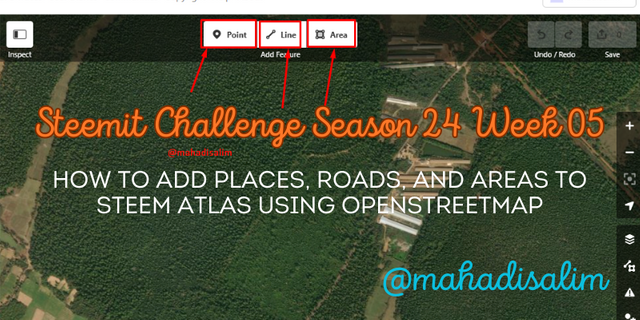
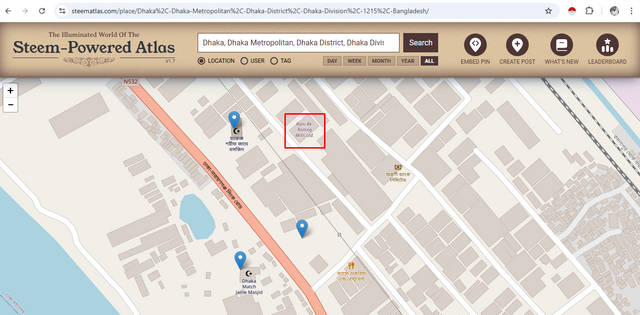
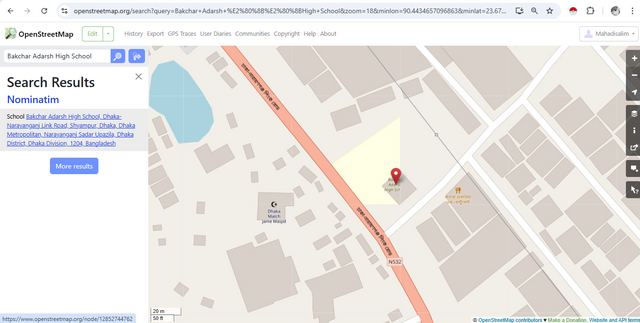
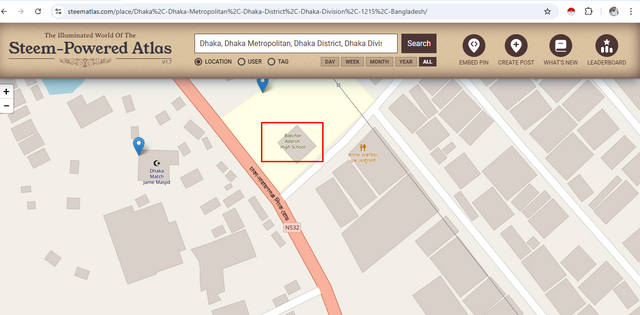

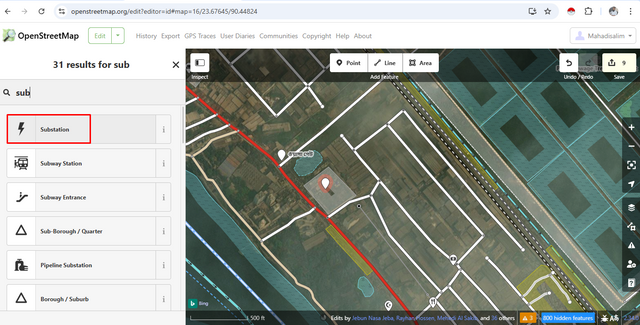
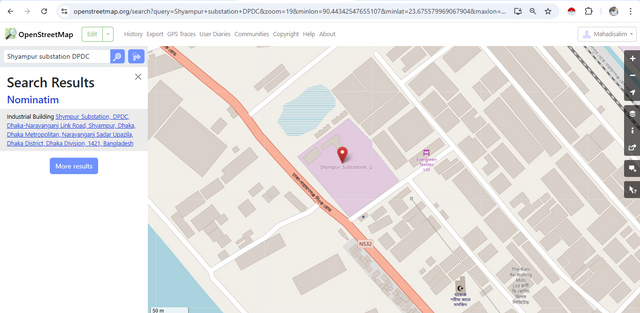
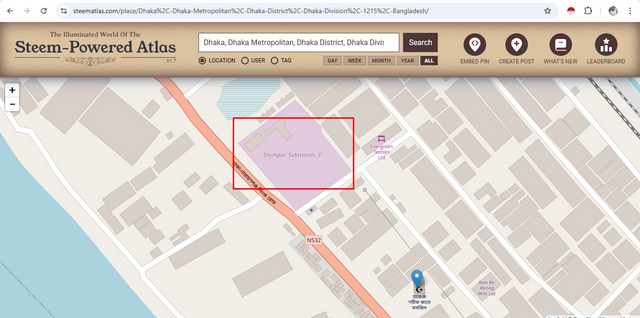








This is my Twitter share link :
https://twitter.com/mahadih83660186/status/1925398401564528961?t=YsZ5KxWlQBhCweaimriI0w&s=19